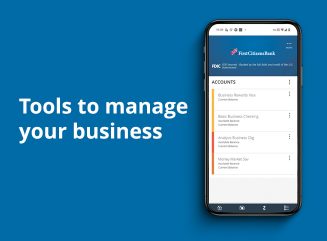
Digital banking for business
Seamlessly access all of your accounts from one place with First Citizens Digital Banking for business.
The federal government's Paycheck Protection Program, or PPP, supported business owners during the COVID-19 shutdown. While these loans have provided a valuable lifeline for many who qualified, they do have some considerable limitations. After you've received funds from your PPP loan, it's important to examine other financing strategies to ensure your business is set up for success through uncertain times.

Under PPP, small and medium-sized businesses were able to borrow money during the early months of the COVID-19 crisis. Business owners could borrow up to $10 million, though the average loan was closer to $100,000. If you qualified, you could use these funds to cover payroll, group healthcare benefits, rent, utilities and interest on mortgages and other debt for your business.
The key advantage of this program is that if you spent at least 60% of the loan to cover payroll, the government would forgive the debt, so you wouldn't have to pay the money back. To receive PPP loan forgiveness, you need to submit an application with the Small Business Administration, or SBA, showing that you used at least 60% of the funds for payroll.
While the PPP program has some appealing benefits, it also has some significant limitations to plan around. First, PPP loan forgiveness only applies if you spent at least 60% of the money on payroll. For businesses that spend more budget on rent, inventory and other expenses, a PPP loan may not be as helpful.
Also, PPP loans require you to not reduce staff or lower wages by more than 25%. If you do, it reduces the forgivable amount of the loan. This limits your ability to manage overhead.
Finally, the PPP loan program only has so much capacity. When it first launched, business owners who applied faced long delays for qualifying. In addition, the program ran out of funds and stopped accepting applicants on Aug. 8, 2020. Unless the government approves more funds for this program, it's no longer possible to take out a new PPP loan.
If your business needs financing beyond what you received through the PPP, there are other ways to raise money, both during the COVID-19 crisis and at any other time.
Besides considering other types of financing, these best practices can help through this difficult stretch.
As you figure out your plan, consider meeting with your business banker for advice. They can help you compare your options and explain what you need to raise financing during these difficult economic conditions.
Email Us
Please select the option that best matches your needs.
Customers with account-related questions who aren't enrolled in Digital Banking or who would prefer to talk with someone can call us directly.